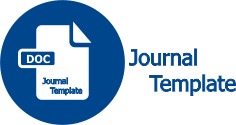Kepemimpinan Kewirausahaan dan Inovasi Terhadap Organisasi Pembelajaran dan Kinerja Organisasi Dimoderasi Gender pada Hotel Bintang Empat di Jawa Timur
DOI:
https://doi.org/10.30651/blc.v20i2.19670Kata Kunci:
entrepreneurial leadership, innovation, learning organization, organizational performance, genderAbstrak
Abstract
This study aims to analyze the moderating effect of the gender of the leader on the influence of entrepreneurial leadership and innovation on organizational learning and organizational performance at four-star hotels in East Java. Explanatory research is used as a research approach. The sample unit is the CEO and heads of departments at four-star hotels in East Java, with 71 people. Proving the hypothesis uses the Partial Least Square-SEM (PLS-SEM) technique. Research findings show that entrepreneurial leadership and innovation influence organizational learning, innovation, and organizational learning, impacting organizational performance, but not entrepreneurial leadership. Finally, male leaders are more robust in leadership, innovative, and have better learning organizations, which are vital in improving hotel performance.
Abstrak
Studi ini bertujuan menganalisis efek moderasi dari jenis kelamin pimpinan pada pengaruh kepemimpinan kewirausahaan dan inovasi terhadap organisasi pembelajaran dan kinerja organisasi pada hotel bintang empat di Jawa Timur. Explanatory research digunakan sebagai pendekatan penelitian. Unit sampel adalah CEO dan kepala bagian pada hotel bintang empat di Jawa Timur, dengan sebanyak 71 orang. Pembuktian hipotesis menggunakan teknik Partial Least Square-SEM (PLS-SEM). Temuan penelitian menunjukkan kepemimpinan kewirausahaan dan inovasi berpengaruh terhadap organisasi pembelajaran, inovasi dan organisasi pembelajaran selanjutnya berpengaruh terhadap kinerja organisasi, namun tidak untuk kepemimpinan kewirausahaan. Terakhir, pimpinan laki-laki lebih kuat dalam kepemimpinan, lebih inovatif, dan organisasi pembelajarannya lebih baik, sehingga lebih kuat dalam mendorong peningkatan kinerja hotel.
Referensi
Armstrong M., (2014), Armstrong’s Handbook of Human Resource Management Practice. 13th ed. UK: Kogan Page Limited.
Berberoglu, Aysen, & H. Secim, (2015), Organizational commitment and perceived organizational performance among health care professionals: empirical evidence from a private hospital in Northern Cyprus. Journal of Economics and Behavioral Studies, AMH International, vol. 7(1), pages 64-71.
Brigham, E., & Houtson, J. (2004). Dasar-dasar Manajemen Keuangan (10 ed.). (Ali. Akbar Yulianto, Penerj.) Jakarta: Salemba Empat.
Dias, C., & Escoval, A. (2015). Hospitals as learning organizations: fostering innovation through interactivelearning. Quality Management in Health Care, 24(1), 52–59.
Dosi, G. (2008). The nature of the innovative process. In G. Dosi, C. Freeman, R. Nelson, G. Silverberg, & L. Soete (Eds.), Technical Change and Economic Theory (pp. 221-238). Pinter Publishers.
Ferdinand, Augusty, (2014). Metode Penelitian Manajemen, Semarang, Badan Penerbit Universitas Diponegoro.
Ghozali, Imam. (2014). Structural Equation Modelling (Konsep dan Aplikasi dengan Program Amos 22.0). Cetakan ke VI. Semarang: Penerbit Universitas Diponegoro.
Gil, A. J., Rodrigo-Moya, B., & Morcillo-Bellido, J. (2018). The effect of leadership in the development of innovation capacity: A learning organization perspective. Leadership and Organization Development Journal, 39(3), 694–711. https://doi.org/10.1108/LODJ-12-2017-0399
Gössling, S., Scott, D., & Hall, C. M. (Eds.). (2020). Innovation in Sustainable Tourism: International Case Studies. Routledge.
Griffin, (2004). Manajemen, alih bahasa Gina Gania, Erlangga, Jakarta.
Hair J.F., Black W.C., Babin B.J., Anderson R.E. (2014). Multivariate Data Analysis. Seven Edition. England: Pearson Education Limited.
Hair J.F., Hult G.T., Ringle C.M., Sarstedt M. (2017). A Primer on Partial Least Squares Structural Equation Modeling (PLS-SEM). Second Edition. Los Angeles: SAGE Publications, Inc.
https://www.bps.go.id diakses 28 Juli, 2023
https://kemenkeu.go.id diakses 28 Juli, 2023
https://www.kompas.id diakses 28 Juli, 2023
Imamoglu, Salih Zeki, H. Ince, H. Turkcan, B. Atakay, (2019), The Effect of Organizational Justice and Organizational Commitment on Knowledge Sharing and Firm Performance. Procedia Computer Science, Volume 158, Pages 899-906, https://doi.org/10.1016/j.procs.2019.09.129.
Kaplan, R. S., & Norton, D. P. (1992). The Balanced Scorecard - Measures that drive performance. Harvard Business Review, 70(1), 71-79.
Karakaş, A., Öz, Y., & Yıldız, M. R. (2017). The Effect of Innovation Activities on Organizational Performance: A Research on Hotel Businesses. Journal of Recreation and Tourism Research, 4(1), 49–59. www.jrtr.org
Karim, Z., & Rahman, M. M. (2018). The Impact of Learning Organization on the Performance of Organizations and Job Satisfaction of Employees: An Empirical Study on Some Public and Private Universities in Bangladesh. European Journal of Business and Management, 10(8).
Naciti, V. (2021). Gender diversity and organizational performance: An empirical analysis on healthcare organizations. Mecosan Journal, (120), pp. 45-61. DOI 10.3280/MESA2021-120004.
Nyukorong, R., & Quisenberry, W. (2016). Character Traits Of Effective Executives: A Phenomenological Study Of Ceos In Ghana. European Scientific Journal, ESJ, 12(20), 69. https://doi.org/10.19044/ESJ.2016.V12N20P69
Rahim, H. L., Abidin, Z. Z., Mohtar, S., & Ramli, A. (2015). The Effect of Entrepreneurial Leadership Towards Organizational Performance. International Academic Research Journal of Business and Technology, 1(2), 193–200
Rauch, A., Wiklund, J., Lumpkin, G. T., & Frese, M. (2009). Entrepreneurial orientation and business performance: An assessment of past research and suggestions for the future. Entrepreneurship Theory and Practice, 33(3), 761-787.
Robbins, S. & Coulter, M. 2007. Manajemen. Edisi Kedelapan. Jakarta: PT. Indeks.
Senge, P. M. (1990). The Fifth Discipline: The Art & Practice of The Learning Organization. Doubleday/Currency.
Serrat, O. (2009). Building a Learning Organization. Asian Development Bank.
Sidqi, M. A., Hermawan, A., & Zainal. (2018). Sustainable Innovation Strategy and Role of Learning Organization in Improving Business Unit Performance Empirical Study on Electricity Company in Indonesia. American Research Journal of Business and Management, 4(1), 1–12.
Soost, C. (2021). Gender and organizational performance in business succession. Journal of Small Business and Entrepreneurship, 33 (1), pp. 93-122. DOI 10.1080/08276331.2019.1692765
Sugiyono. (2014). Metode Penelitian Kuantitatif, Kualitatif, dan R&D. Bandung: Penerbit Alfabeta.
Syam, H., Akib, H., Patonangi, A. A., & Guntur, M. (2018). Principal Entrepreneurship Competence Basedon Creativity and Innovation in the Context of Learning Organizations in Indonesia. Journal ofEntrepreneurship Education, 21(3).
Thornberry, N. (2006). Lead Like an Entrepreneur. McGraw-Hill Education.https://mhebooklibrary.com/doi/book/10.1036/9780071631693?contentTab=true
Tidd, J., Bessant, J., & Pavitt, K. (2005). Managing Innovation: Integrating Technological, Market and Organizational Change (3rd ed.). John Wiley & Sons.
Zyl, H. J. C. van, & Mathur-Helm, B. (2007). Exploring a conceptual model, based on the combined effectsof entrepreneurial leadership, market orientation and relationship marketing orientation on SouthAfrica’s small tourism business performance. South African Journal of Business Management, 38(2),17–24. https://doi.org/10.4102/SAJBM.V38I2.580.














